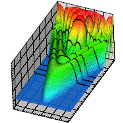Department of Physics and Astronomy: Publications and Other Research

Anthony F. Starace Publications
Document Type
Article
Date of this Version
5-2-2019
Citation
PHYSICAL REVIEW A 99, 053403 (2019)
DOI: 10.1103/PhysRevA.99.053403
Abstract
An analytic description of high-order harmonic generation (HHG) is proposed in the adiabatic (low-frequency) limit for an initial s state and a laser field having an arbitrary wave form. The approach is based on the two-state time-dependent effective range theory and is extended to the case of neutral atoms and positively charged ions by introducing ad hoc the Coulomb corrections for HHG. The resulting closed analytical form for the HHG amplitude is discussed in terms of real classical trajectories. The accuracy of the results of our analytic model is demonstrated by comparison with numerical solutions of the time-dependent Schrödinger equation for a strong bicircular field composed of two equally intense components with carrier frequencies ω and 2ω and opposite helicities. In particular, we demonstrate the effect of ionization gating on HHG in a bicircular field, both for the case that the two field components are quasimonochromatic and for the case that the field components are time-delayed short pulses. We show how ionization in a strong laser field not only smooths the usual peak structures in HHG spectra but also changes the positions and polarization properties of the generated harmonics, seemingly violating the standard dipole selection rules. These effects appear for both short and long incident laser pulses. In the case of time-delayed short laser pulses, ionization gating provides an effective tool for control of both the HHG yield and the harmonic polarizations [Frolov et al., Phys. Rev. Lett. 120, 263203 (2018)]. For the case of short laser pulses, we introduce a simple two-dipole model that captures the physics underlying the harmonic emission process, describing both the oscillation patterns in HHG spectra and also the dependence of the harmonic polarizations on the harmonic energy.
Included in
Atomic, Molecular and Optical Physics Commons, Elementary Particles and Fields and String Theory Commons, Plasma and Beam Physics Commons


Comments
©2019 American Physical Society. Used by permission.